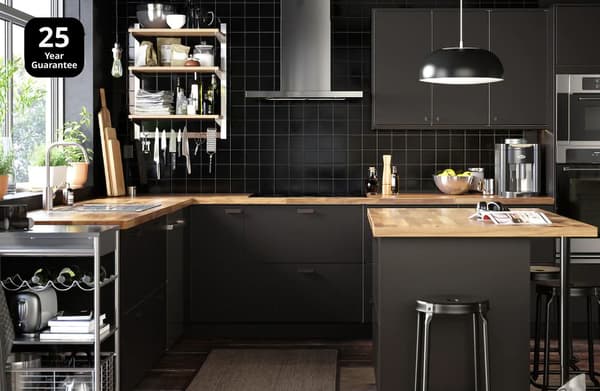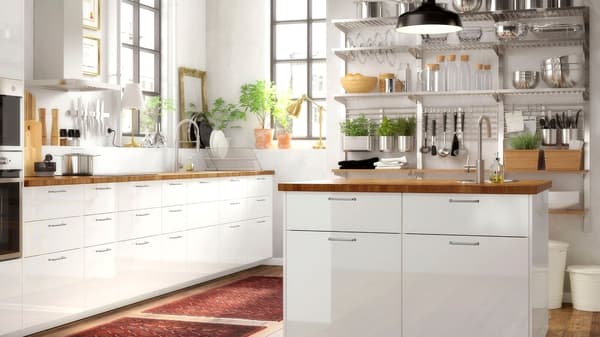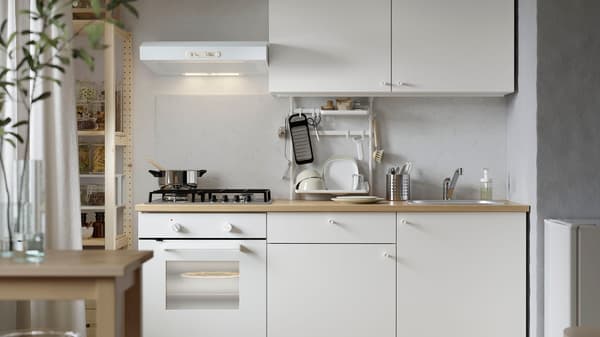How to plan and buy an IKEA kitchen yourself
IKEA Kitchens are designed to be installed by you.
At IKEA, we've designed our kitchens to be simple enough for you to put together yourself. Whether your kitchen is large or small, we offer well-coordinated kitchen products that'll support your every need, so let's get started!
1. Measure your kitchen
Measurements are important as they are the base for your kitchen.
Give yourself plenty of time to measure precisely. Make sure to make your measurements in millimetres so that your new kitchen correctly fits your space. Here's how you do it.
2. Plan your kitchen
Outline your kitchen and see what it will look like.
When planning your kitchen, keep the three work zones in mind: preparing and cooking (red), washing up (blue), and food storage (green). How you position your work zones and the distance between them is called a working triangle.
3. Order and get it home
When you're satisfied with your kitchen plan, it's time to order it.














